Now Reading: Top 3 Best Places Visiting in Pakke Kessang for Nature, Wildlife & Culture
-
01
Top 3 Best Places Visiting in Pakke Kessang for Nature, Wildlife & Culture

Top 3 Best Places Visiting in Pakke Kessang for Nature, Wildlife & Culture
1. Pakke Wildlife Sanctuary
Pakke Wildlife Sanctuary & Tiger Reserve establishes itself as Arunachal Pradesh’s largest protected natural area among the Eastern Himalayan foothills. This protected area extends across Pakke Kessang District where natural forest territory intersects with river waters and the elevation ranges between 490 to 6,560 feet at its peaks. This ecological hotspot attracts visitors who love nature and wildlife since it draws both enthusiasts and photographers every year.
Geographical Location & Connectivity
- Boundaries and Surrounding Areas
- West & North: Kameng River & Bhareli River.
- East: Pakke River & Papum Reserve Forest (1,064 sq km).
- The region of South and South-East contains both Nameri National Park in Assam along with its adjacent reserve forests.
- West: Doimara Reserve Forest (216 sq km) and Eaglenest Wildlife Sanctuary.
- North: Shergaon Forest Division.
Main Water Bodies
The sanctuary contains several permanent water sources including:
- Nameri River
- Khari River
- Upper Dikorai River
History
- The authorities established the area as Pakhui Reserve Forest in 1966.
- 1977 – Declared a Game Reserve.
- 2001 – Renamed Pakhui Wildlife Sanctuary.
- 2002 – Recognized as the 26th Tiger Reserve under Project Tiger by the National Tiger Conservation Authority (NTCA).
Best Time to Visit Pakke Wildlife Sanctuary
- Sanctuary visitors may explore at any season although the most favorable time to go is:
- The best season to experience safaris together with birdwatching and spectacular views of the surroundings falls during winter (October – April).
- The summer month of June through September brings green landscapes to the area however heavy monsoon rains can create access difficulties.
2. Nameri National Park
You can find Nameri National Park in the eastern Himalayas foothills territory of Assam in India. This park exists within Assam’s Sonitpur District at a 35 kilometer distance from Tezpur while maintaining a 9 kilometer separation from Chariduar village to bring visitors an unforgettable wildlife experience.
About Nameri National Park
The northern border of Nameri National Park extends into Pakhui Wildlife Sanctuary through Arunachal Pradesh terrain where combined areas create an extensive 1000km² biodiversity region. Since 2000 the area has operated as a part of the Tiger Reserve system with Manas Tiger Reserve being the other in Assam.
Nameri receives its existence from the Jia-Bharali River which extends across its southern border from northwestern to southeastern directions. The river Bor-Dikorai, another significant water body, runs from northeast to southwest. Wildlife finds a natural habitat in the park due to the five tributaries Diji, Dinai, Nameri, Khari, and Upper Dikiri that flow from the Arunachal Himalayas.
History of the Park
Nameri achieved its status as a sanctuary on September 18, 1985 through a declaration made on October 17, 1978 that established the reserve forest. The park started as an area of 137 km² (85 mi²). Time past show that the area underwent excessive logging activities prior to its protection status. On November 15th 1998 an additional 75 kilometers square (47 miles square) territory was added to make Nameri a national park. Protective status has established Nameri as a sanctuary maintaining a wide range of flora and fauna species within its territory.
Best Time to Visit
Visitors should aim to explore Nameri National Park from November until April because the conditions provide favorable temperature and many opportunities to observe wildlife. Heavy rain and flooding throughout June to September restricts park admission to visitors.
Where to Stay
- Travelers have several lodging alternatives situated close to the boundaries of the national park.
- You can find immersion at Nameri Eco Camp which operates as an eco-camp.
- Guests seeking natural experiences can stay at budget-friendly Forest Rest Houses which the forest department operates.
- A wide range of resorts together with hotels exist in Tezpur and its vicinity to provide lodging options for guests.
Travel Tips
- It is vital to join a licensed guide because they ensure protection and provide increased chances of spotting wildlife.
- Travelers should choose trekking shoes together with comfortable clothing when attending jungle safaris or performing forest treks.
- Guests should bring both cameras along with binoculars to photograph wildlife and picturesque natural scenery.
- Protect the ecological zone by refraining from trash disposal and while maintaining respect within its boundaries.
3. Bhalukpong
Located in the foothills of the Himalayas Bhalukpung serves as a beautiful town within West Kameng district of Arunachal Pradesh India. This community provides adventure enthusiasts with extraordinary landscapes and cultural heritage while giving tourists a superb opportunity for outdoor adventure. The town exists at 213 meters above sea level and maintains positions 100 km from Bomdila while situated 52 km from Tezpur and 5 km from Tipi. The town finds its perfect spot along the Kameng River which draws visitors seeking both peaceful relaxation and adventurous outdoor pursuits.
History
Before colonial times Bhalukpung was ruled by Aka local leaders while Bhutan and Assam both influenced their governance periodically. Under normal circumstances the Ahom rulers of Assam refrained from interfering in tribal matters but conducted retaliatory attacks in case of necessity. In 1873 the British authorities established Bhalukpung as an exclusive zone where foreign access was forbidden thus maintaining its natural state.
The Aka Tribe inhabits this area where they annually conduct the traditional Nyethidow Festival between January months in Bhalukpung and Thrizino. During January the festival stands as a principal event that presents the exclusive music and performing arts traditions of the Aka indigenous population.
Best Time to Visit
Visitors can reach Bhalukpung at its best between October and April since this period features favorable weather conditions for outdoor activities. Travel through Bhalukpung becomes challenging due to the heavy rainfall experienced during monsoons from June to September while December to February provides cool weather conditions for comfortable outdoor activities.
Where to Stay in Bhalukpung
- Naturalists seeking riverfront accommodations should choose between Eco-Camps and Riverside Tents in Bhalukpung.
- Forest Rest Houses serve as budget-friendly retreats which the forest department manages throughout Bhalukpung.
- Various hotels and resorts exist in Bhalukpung along with other nearby areas offering different price ranges and convenient facilities.
Travel Tips
A visitor must obtain an Inner Line Permit (ILP) as a precondition to enter the state because it is mandatory for everybody except those who have residence in Arunachal Pradesh. Travelers may easily acquire the Inner Line Permit through the internet in addition to authorized locations in Guwahati, Tezpur, and Delhi.
Wanderers should put on trekking shoes that provide comfort while bringing winter clothes when traveling during cold months.
Practice renewable tourism through clean behavior and cultural sensitivity and choice of eco-specfic tourism choices.
Related articles : Best Places Visiting in Namsai for Culture, Nature & Spirituality
Stay Informed With the Latest & Most Important News
Previous Post
Next Post
-
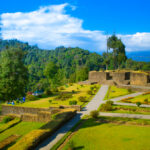 01Top 5 Best Places Visiting in Gyalshing – Monasteries, Lakes & Scenic Escapes
01Top 5 Best Places Visiting in Gyalshing – Monasteries, Lakes & Scenic Escapes -
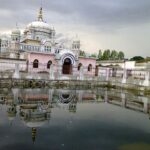 02Top 5 Best Places Visiting in Panna – Temples, Waterfalls & Wildlife Escapes
02Top 5 Best Places Visiting in Panna – Temples, Waterfalls & Wildlife Escapes -
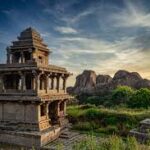 03Top 2 Best Places Visiting in Chitradurga for History, Nature & Adventure
03Top 2 Best Places Visiting in Chitradurga for History, Nature & Adventure -
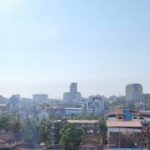 04Top 10 Best Places Visiting in Dakshina Kannad for Culture, Nature & Coastal Charm
04Top 10 Best Places Visiting in Dakshina Kannad for Culture, Nature & Coastal Charm -
 05Top 5 Best Places to Visit in Malerkotla – Malerkotla Fort, Sheesh Mahal & More
05Top 5 Best Places to Visit in Malerkotla – Malerkotla Fort, Sheesh Mahal & More -
 06Best Places Visiting in Shopian – Explore Top Attractions & Hidden Gems
06Best Places Visiting in Shopian – Explore Top Attractions & Hidden Gems -
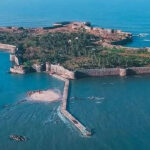 07Top 10 Best Places to Visit in Sindhudurg for Beaches, Forts & Nature
07Top 10 Best Places to Visit in Sindhudurg for Beaches, Forts & Nature














Pingback: Top 4 Best Places Visiting in Shi Yomi – Explore Arunachal's Hidden Gem